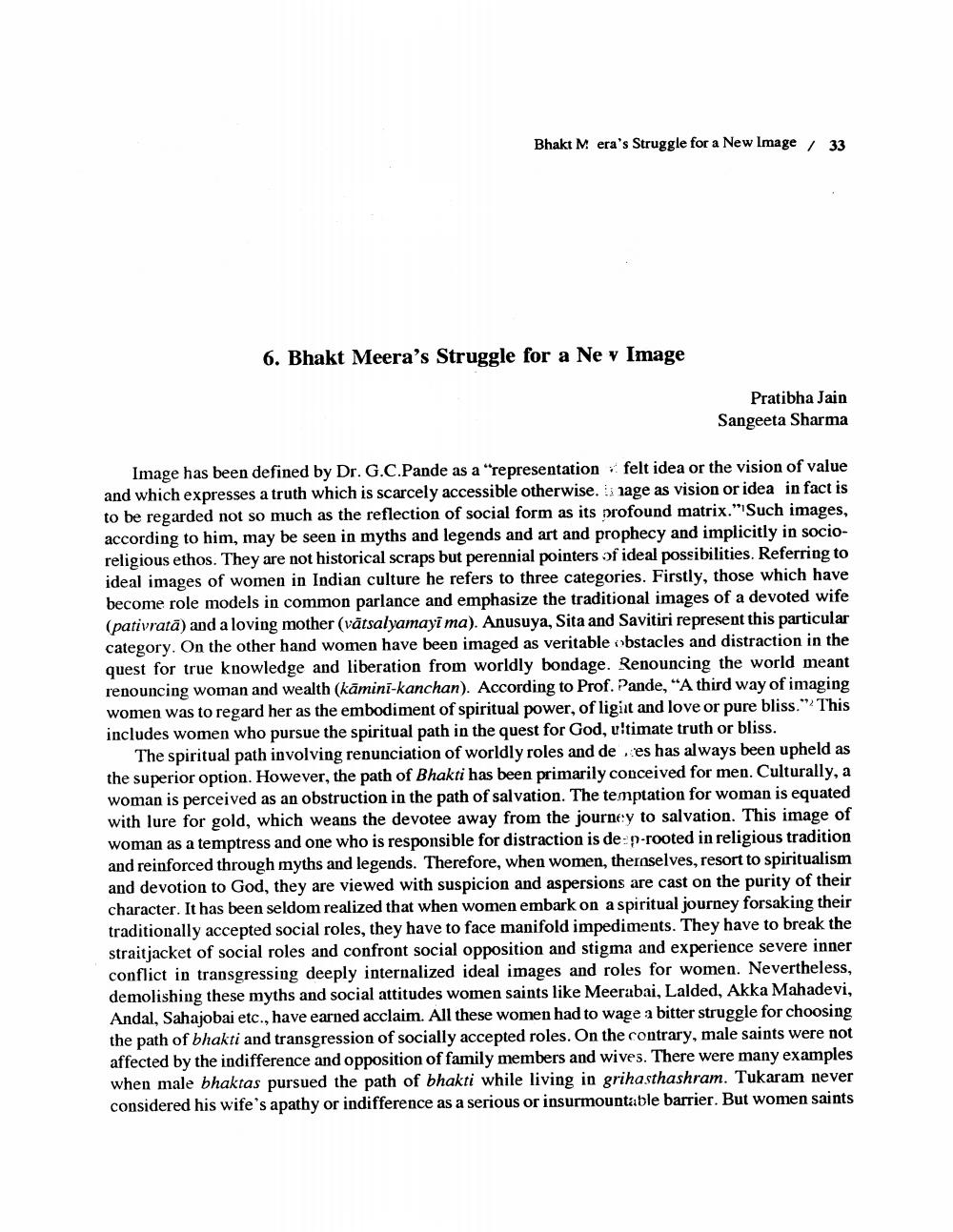________________
Bhakt M era's Struggle for a New Image
33
6. Bhakt Meera's Struggle for a Ne v Image
Pratibha Jain Sangeeta Sharma
Image has been defined by Dr. G.C.Pande as a "representation felt idea or the vision of value and which expresses a truth which is scarcely accessible otherwise. i nage as vision or idea in fact is to be regarded not so much as the reflection of social form as its profound matrix." Such images, according to him, may be seen in myths and legends and art and prophecy and implicitly in socioreligious ethos. They are not historical scraps but perennial pointers of ideal possibilities. Referring to ideal images of women in Indian culture he refers to three categories. Firstly, those which have become role models in common parlance and emphasize the traditional images of a devoted wife (pativratā) and a loving mother (vätsalyamayi ma). Anusuya, Sita and Savitiri represent this particular category. On the other hand women have been imaged as veritable obstacles and distraction in the quest for true knowledge and liberation from worldly bondage. Renouncing the world meant renouncing woman and wealth (kāmini-kanchan). According to Prof. Pande, "A third way of imaging women was to regard her as the embodiment of spiritual power, of ligiit and love or pure bliss." This includes women who pursue the spiritual path in the quest for God, ultimate truth or bliss.
The spiritual path involving renunciation of worldly roles and de ces has always been upheld as the superior option. However, the path of Bhakti has been primarily conceived for men. Culturally, a woman is perceived as an obstruction in the path of salvation. The temptation for woman is equated with lure for gold, which weans the devotee away from the journey to salvation. This image of woman as a temptress and one who is responsible for distraction is dep-rooted in religious tradition and reinforced through myths and legends. Therefore, when women, theroselves, resort to spiritualism and devotion to God, they are viewed with suspicion and aspersions are cast on the purity of their character. It has been seldom realized that when women embark on a spiritual journey forsaking their traditionally accepted social roles, they have to face manifold impediments. They have to break the straitjacket of social roles and confront social opposition and stigma and experience severe inner conflict in transgressing deeply internalized ideal images and roles for women. Nevertheless, demolishing these myths and social attitudes women saints like Meerabai, Lalded, Akka Mahadevi, Andal, Sahajobai etc., have earned acclaim. All these women had to wage a bitter struggle for choosing the path of bhakti and transgression of socially accepted roles. On the contrary, male saints were not affected by the indifference and opposition of family members and wives. There were many examples when male bhaktas pursued the path of bhakti while living in grihasthashram. Tukaram never considered his wife's apathy or indifference as a serious or insurmountable barrier. But women saints




